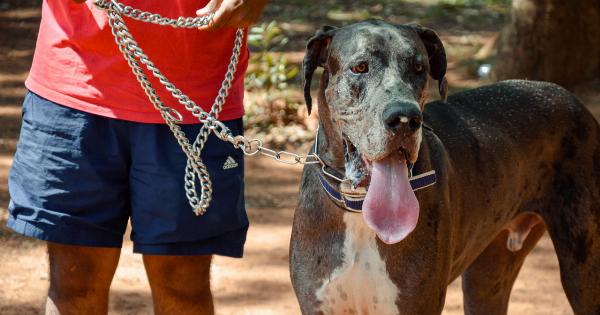There is an ongoing debate among dog owners and animal enthusiasts about whether it is safe and appropriate for small dogs to be transported on various forms of transportation.
While some argue that small dogs should be allowed to ride in cars, on bicycles, and even on motorcycles, others believe that it can be dangerous and potentially harmful to the animals. This article will explore both sides of the debate, providing insights on the various perspectives and factors to consider when making a decision about small dogs riding.
The Safety Concerns
One of the main concerns raised by those opposing small dogs riding is the safety issue. They argue that small dogs can easily become injured during transportation due to their fragile nature.
Car accidents, sudden stops, or unexpected jolts can cause the dog to be thrown around inside the vehicle, potentially resulting in broken bones or other serious injuries. It is also suggested that dogs riding in open-air vehicles, such as motorcycles or bicycles, have an increased risk of falling off and sustaining injuries.
Additionally, there are concerns about the safety of the dog owner and other road users. Small dogs riding on the driver’s lap or on the handlebars of a bicycle can create distractions that may lead to accidents.
These distractions can prevent the driver from maintaining complete control of the vehicle, putting everyone’s safety at risk.
Training and Acclimatization
Proponents of small dogs riding argue that with proper training and acclimatization, these concerns can be mitigated.
They suggest that dogs can be trained to sit and stay securely in a designated area within the vehicle or on the chosen mode of transportation. This could involve using specially designed dog seats, crates, or harnesses, ensuring the dog remains safe and restrained during the ride.
Advocates also emphasize the importance of gradually introducing the dog to the transportation method. Starting with short trips and gradually increasing the duration and distance can help the dog feel more comfortable and less anxious during the ride.
This acclimatization process may involve positive reinforcement techniques, such as rewards or treats, to create a positive association with the experience.
Temperature and Weather Conditions
Another point of contention in the debate is the consideration of temperature and weather conditions. Opponents argue that extreme weather, such as high temperatures or cold winds, can be detrimental to small dogs during transportation.
Dogs with short fur or those prone to respiratory issues may be more vulnerable to these weather conditions, potentially leading to heatstroke, hypothermia, or other health problems.
Supporters of small dogs riding counter this argument, suggesting that appropriate measures can be taken to protect the animals from the elements.
They recommend providing dogs with suitable clothing, such as doggie coats or vests, to keep them warm during colder weather and using pet-friendly sunscreen or sun shades to protect them from excessive heat and sun exposure. By properly preparing and equipping the dog for the prevailing weather conditions, the risk of adverse effects can be minimized.
Alternative Transportation Options and Considerations
For those who remain skeptical about small dogs riding in cars or on two-wheeled vehicles, alternative transportation options can be explored.
Various pet strollers, backpack carriers, or even pet slings can be used to transport small dogs safely and conveniently, especially for shorter distances or visits to crowded areas.
Furthermore, certain public transport systems, such as trains or buses, allow small dogs as long as they are kept in carriers. This provides an alternative means of transportation for dog owners who do not have access to a car or prefer not to drive.
However, it is essential to check the specific regulations and policies of public transportation providers to ensure compliance and the safety of both the dog and other passengers.
Consideration for Individual Dog Characteristics
Ultimately, the decision on whether small dogs should be allowed to ride depends on the unique characteristics and needs of each dog.
Factors such as the dog’s size, health condition, temperament, and behavior should all be taken into account when making a decision.
For example, dogs with pre-existing health conditions or mobility issues may not be suitable for certain modes of transportation.
It is crucial to consult with a veterinarian to determine whether the dog is physically capable of enduring the type of transportation being considered.
Conclusion
The debate on small dogs riding remains a topic of discussion among dog owners and animal enthusiasts.
While safety concerns and potential risks are valid points raised by opponents, proponents argue that with proper training, acclimatization, and appropriate measures, small dogs can be safely transported on various forms of transportation.
The decision on whether to allow small dogs to ride ultimately rests on the dog owners, who should consider factors such as training, acclimatization, temperature, alternative transportation options, and the individual characteristics and needs of their dogs. By prioritizing the safety and well-being of their pets, owners can make informed choices and ensure a comfortable and secure travel experience for their small dogs.































